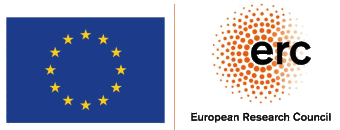Project Description
 Wayfinding involves memory for routes, general orientation in an environment and the acquisition of survey knowledge. Moreover, wayfinding includes problem-solving activities such as navigational planning. Competent wayfinding is based on a mental representation of large-scale space, the cognitive map. To date, mobile car and pedestrian navigation assistance systems offer guidance by instructing the navigator turn-by-turn based on a metric map. Those systems do not provide comprehensive spatial overview and orientation information. Therefore, they do not support the formation of a cognitive map. As a consequence, the navigator's spatial cognitive processes are impeded. This research project develops a new paradigm for assisted navigation termed Wayfinding Through Orientation. This paradigm supports the navigator's wayfinding activities through providing orientation information that is cognitively appropriate by resembling attributes of a cognitive map. The spatial information provided is schematized and includes different levels of abstraction as well as global and local landmarks in one visualization. It is proposed that orientation information in this form supports both spatial orientation and navigation in large-scale real environments. Accordingly, the project investigates the following goals with an interdisciplinary approach involving geoinformatics / computer science and cognitive science / psychology.
Wayfinding involves memory for routes, general orientation in an environment and the acquisition of survey knowledge. Moreover, wayfinding includes problem-solving activities such as navigational planning. Competent wayfinding is based on a mental representation of large-scale space, the cognitive map. To date, mobile car and pedestrian navigation assistance systems offer guidance by instructing the navigator turn-by-turn based on a metric map. Those systems do not provide comprehensive spatial overview and orientation information. Therefore, they do not support the formation of a cognitive map. As a consequence, the navigator's spatial cognitive processes are impeded. This research project develops a new paradigm for assisted navigation termed Wayfinding Through Orientation. This paradigm supports the navigator's wayfinding activities through providing orientation information that is cognitively appropriate by resembling attributes of a cognitive map. The spatial information provided is schematized and includes different levels of abstraction as well as global and local landmarks in one visualization. It is proposed that orientation information in this form supports both spatial orientation and navigation in large-scale real environments. Accordingly, the project investigates the following goals with an interdisciplinary approach involving geoinformatics / computer science and cognitive science / psychology.
(1) Identification of orientation information in the context of wayfinding. Sketch maps and route descriptions generated by participants will be analyzed with respect to spatial orientation information. A categorization schema for different types of orientation information will be developed.
(2) Generating orientation information. The categorization schema will be utilized to develop methods that extract and generate orientation information involving different levels of abstraction and schematization, and to determine landmarks and places with vague boundaries.
(3) Communication of orientation information in the context of wayfinding. Principles for visualizations and verbal annotations will be developed that will be used to present wayfinding and orientation information visually and verbally. These principles will be evaluated and optimized through empirical studies for formative evaluation.
(4) Empirical investigation of the Wayfinding Through Orientation paradigm. It is proposed that wayfinding and orientation information can easily be encoded and learned. Furthermore, it is proposed that wayfinding through orientation visualizations can effectively be used in a naturalistic navigation and orientation scenario in a real environment. Empirical studies will examine these hypotheses by comparing wayfinding through orientation visualizations with guidance-based assistance systems and metric maps.
This project has received funding from the European Research Council (ERC) under the European Union’s Horizon 2020 research and innovation programme (grant agreement No 637645). Funding Period: 2015-2020
Previously, this research direction has received funding from the German Research Foundation (DFG) (grant No SCHW1372/15-1). Funding Period: 2014-2017


